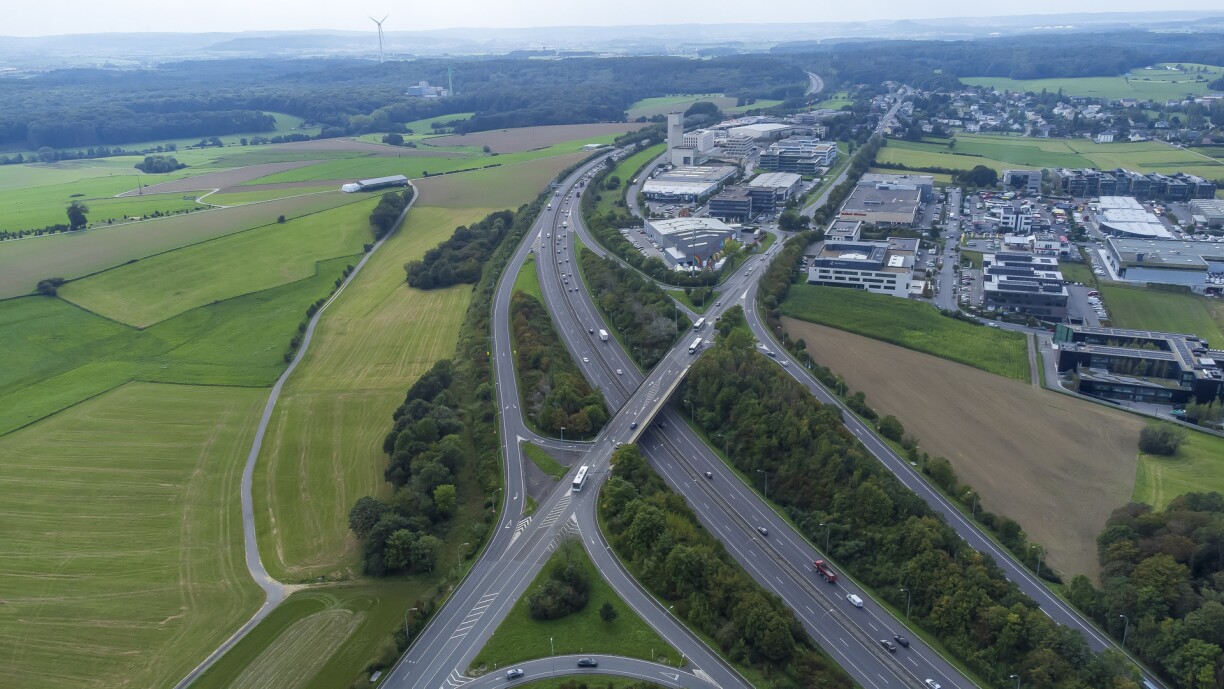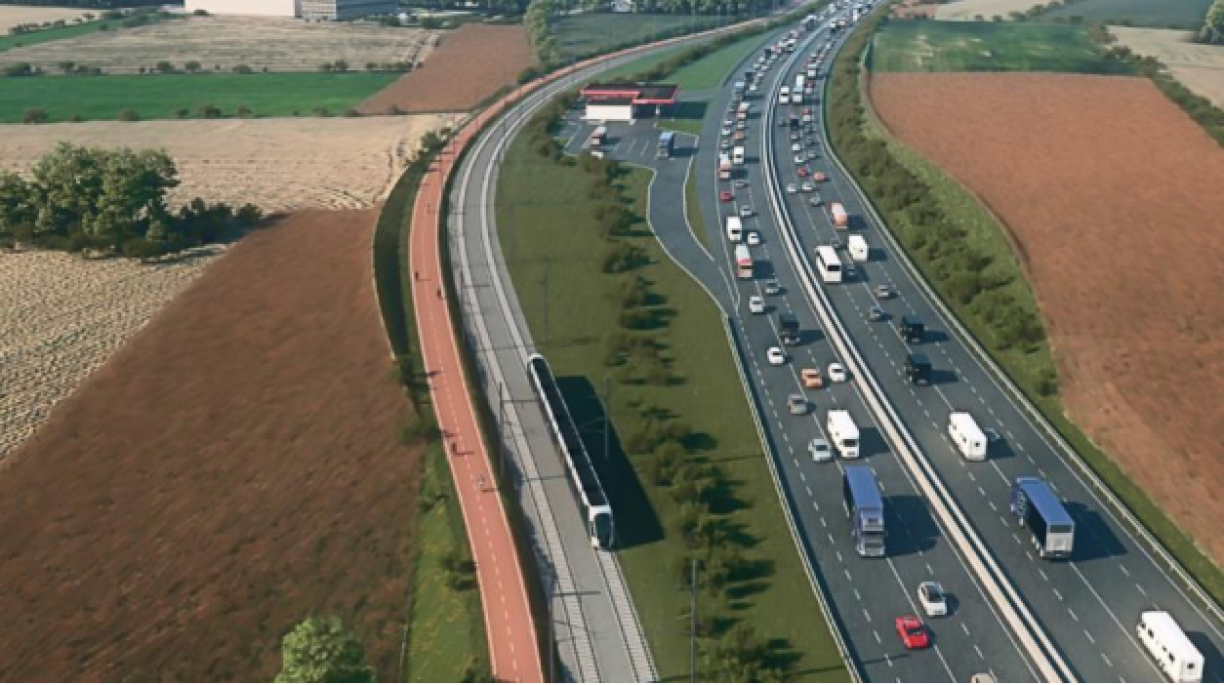
Spanning a twelve-year timeline, this initiative seeks to transform the A4 into a versatile multimodal corridor featuring a high-speed tramline and an express bicycle lane, linking Luxembourg City with Esch-sur-Alzette.
By 2035, the A4, which frequently experiences congestion during peak hours, will undergo a comprehensive overhaul along its stretch between Luxembourg City and Esch. This transformation will establish a multimodal corridor by expanding the motorway’s capacity and introducing a rapid tramway. Additionally, an express bicycle path will be integrated, running alongside the left side of the A4.
The scope of the project, presented at the Ministry of Mobility in Kirchberg on Wednesday, is nothing short of monumental. It encompasses widening the A4, enlarging five key motorway interchanges, constructing a bridge, establishing an 18.7 km high-speed tram route, introducing five new interchanges, creating an express cycling route, interconnecting municipal cycling networks, and implementing traffic-calming measures in communities adjacent to this future major transportation artery.

Minister for Mobility François Bausch expressed unwavering confidence in this substantial investment, describing it as “well worth it.” He believes that this massive infrastructure undertaking will not only enhance the connectivity of the country’s two primary economic hubs — the capital and its conurbation — but also invigorate the southern region, facilitating future development for the Grand Duchy.
Efforts to alleviate congestion on the frequently gridlocked A4 have taken centre stage in the newly unveiled project. A pivotal concern lies at the intersection of the A4 and the southern link road, A13, often considered a traffic bottleneck. To tackle this issue and accommodate the projected 239,000 annual journeys by 2035, as outlined in the National Mobility Plan, a significant enhancement is planned: the addition of a dedicated third lane reserved for carpooling with a minimum of three occupants per vehicle, as well as buses, as elaborated by the Minister.
The high-speed tramline, operating in a “fast” mode with speeds of up to 50 km/h between Cloche d’Or and Metzeschmelz, is a notable feature of the project. André Van der Marck, Luxtram’s Managing Director, stressed that this pace is approximately two and a half times faster than the urban tram service within Luxembourg City, resulting in a 31-minute journey from Cloche d’Or to Belvaux town hall, covering a distance of 18.7 km.

The development of the rapid tram route and its accompanying express cycleway will occur in four distinct phases. Starting in 2028, the rapid tram will operate between Cloche d’Or and Leudelange, extending to Foetz by 2030, Metzeschmelz in Esch-sur-Alzette by 2032, and finally reaching Belval by 2035.
The dedicated express bikeway connecting the capital to Belval is anticipated to dramatically boost annual ridership, projecting an increase from 3,000 (as measured in 2017) to 43,000 by 2035. Noteworthy is its complete separation from vehicular traffic, allowing cyclists to traverse without encountering cars or intersecting with other roads. “It’s a model that exists in the Netherlands and Denmark, where it works really well,” Bausch stated.
With an eye toward the horizon, Minister Bausch sets an ambitious goal: “Today we have 40,000 people using public transport on this corridor, and we would like to increase that to 90,000 by 2035.” He stressed that the quality of public transport and the possibilities of switching from one mode of transport to another will “increase enormously.”
![In Foetz, there are plans to enhance the existing interchange [1], facilitate the operation of the rapid tram and express bikeway along the left side of the A4 [2], optimise the A13-A4-A13 corridor [3], and implement measures to reduce traffic noise along Rue du Brill [4].](https://static-prod.rtl.lu/dims4/default/fb001be/2147483647/strip/true/crop/848x489+0+0/resize/1224x706!/quality/90/?url=https%3A%2F%2Frtl-luxembourg-new-production-web.s3.eu-central-1.amazonaws.com%2Fbrightspot%2F26%2Fac%2Fbe305fd4868e53cb40e8b24fa4fd%2Fa84f59edae443c2b5733e5b1cbc6f7f9.png)
In emphasising the future public transport landscape, Bausch highlighted that “people will have many more opportunities to use public transport in the future,” noting that the planned high-level service corridor, in addition to the rapid tram, will significantly elevate the quality of bus services in the southern region.
The mayors of the six municipalities involved (Luxembourg City, Leudelange, Mondercange, Schifflange, Esch-sur-Alzette, and Sanem) “are enthusiastic,” the minister assured, even as he acknowledges that the direction of this substantial investment will ultimately fall into the hands of the upcoming government resulting from the imminent elections.
For the outgoing Green Party minister, who has already announced that he will not take part in any future government, this project “has to be done, because if we don’t do it, we’re making a big mistake and we’ll be putting a huge brake on the country’s development.”